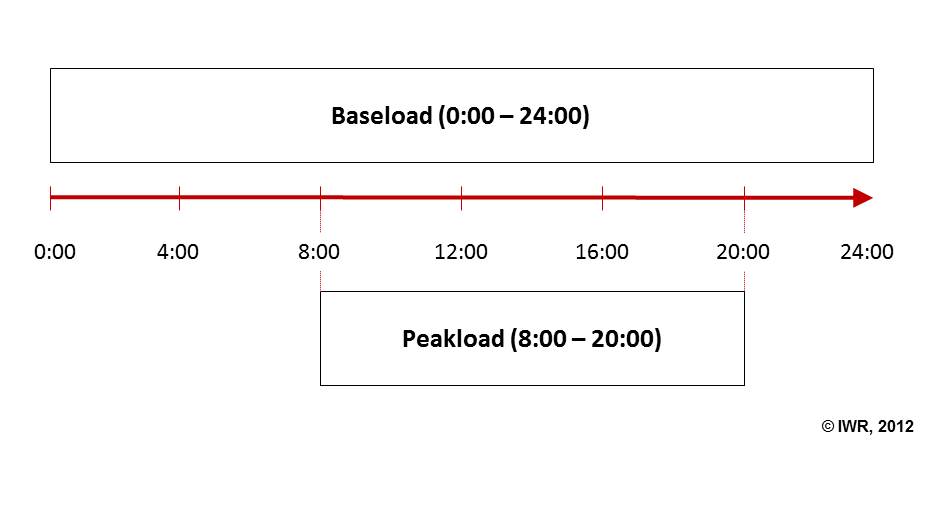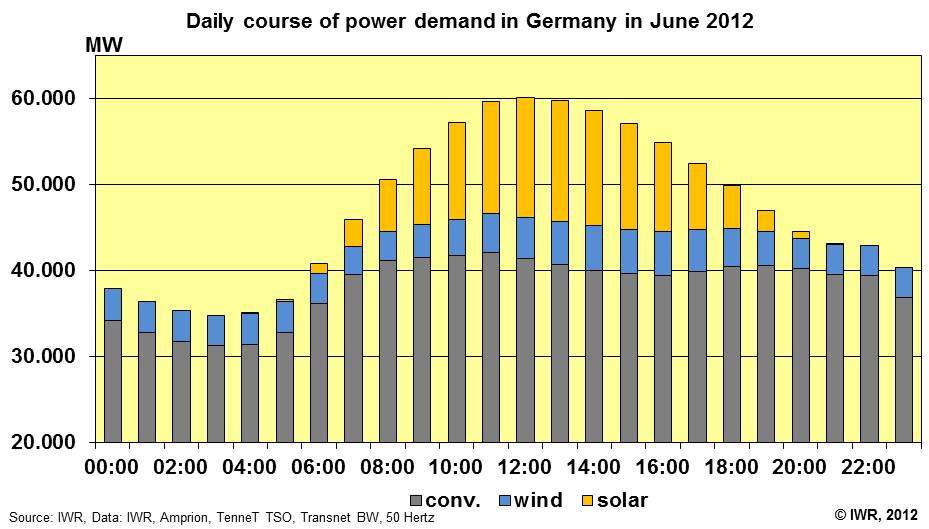The generation of photovoltaic and wind power at peak load periods only reduces the exchange power price at midday, but otherwise causes the grids to be congested.
Facts
The term peak load power is defined by the electricity exchange as power, which is not traded at midday, but between 8 am and 8 pm. The prices for peak load power do not include the weekend values, so that the published peak load power price appears to be higher than it actually is. Wind and solar power does not congest the lines. The increasing production of solar power during the course of the day follows the rising demand for power. Photovoltaic systems provide electricity precisely when it is needed.
1. Pricing for peak load electricity between 8 am and 8 pm
Peak load power is, like base load power, traded on the exchange on the spot market and futures market. The term “peak load electricity” implies a power segment in which specifically those power volumes are marketed, which relate to the peak load window at midday. However, in fact the price for peak load power on the spot market is determined on the basis of a trading time window from 8 am to 8 pm. On the other hand, for the product base load the whole 24-hour period of a day from midnight to midnight is used to determine the average figure.

2. No price transparency for peak load electricity
Peak load electricity is traded in Germany for normal working days, public holidays and weekend days (Saturdays and Sundays). On all days, prices for peak load power are set and transactions performed on the exchange. The prices and transactions for working days and low-load public holidays are included in the calculation of monthly values. The weekend days Saturday and Sunday are, however, not taken into account when averages are created. As a result of this special treatment, the price for peak load electricity published on the exchange is far higher than it actually is, because all trading days of a month are taken into consideration. For the monthly figure for November 2012, this means, for example, that the electricity price for peak load electricity is not, as published, on average 5.84, but only 5.39 cents per kWh. That is 8 percent less than was published by the electricity exchange.

3. Solar power generation at midday does not congest power lines
The daily course of the demand for electricity describes the form of what is essentially a bell curve. The upper part of the bell corresponds to the additionally needed power plant output as compared to the night-time level. In the past, this additional need was covered by the successive and needs-based addition of conventional coal-fired or gas-fired power plants, so-called peak load power plants. As the diagram below shows, today the additionally needed peak load can largely be covered with the aid of solar power (yellow bars) and wind energy plants (blue bars). As the generation of solar power over the day exactly follows the daily course of demand for electricity, it is particularly suited to replacing conventional peak load power plants. Moreover, the production of solar power in relation to the course of the day ensures that there is no congestion of the grids with photovoltaic power. Photovoltaic power is only produced when power is needed on the basis of the load profile.
© IWR 2026
All rights reserved
Reproduction only with permission of the IWR /IWR.de GmbH



